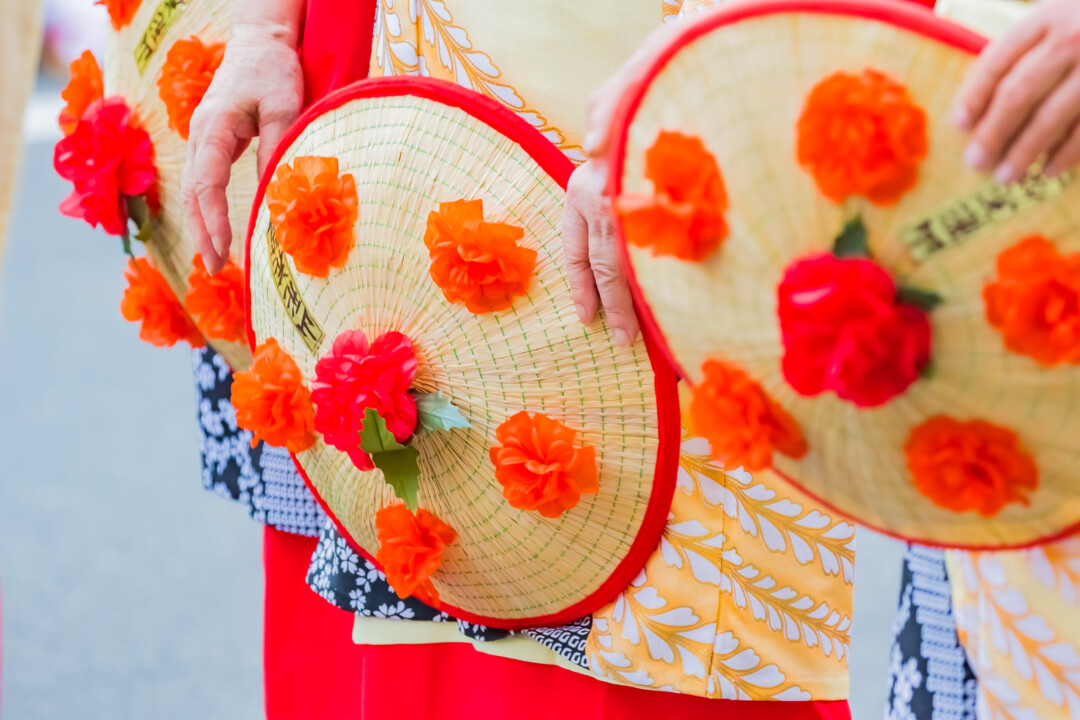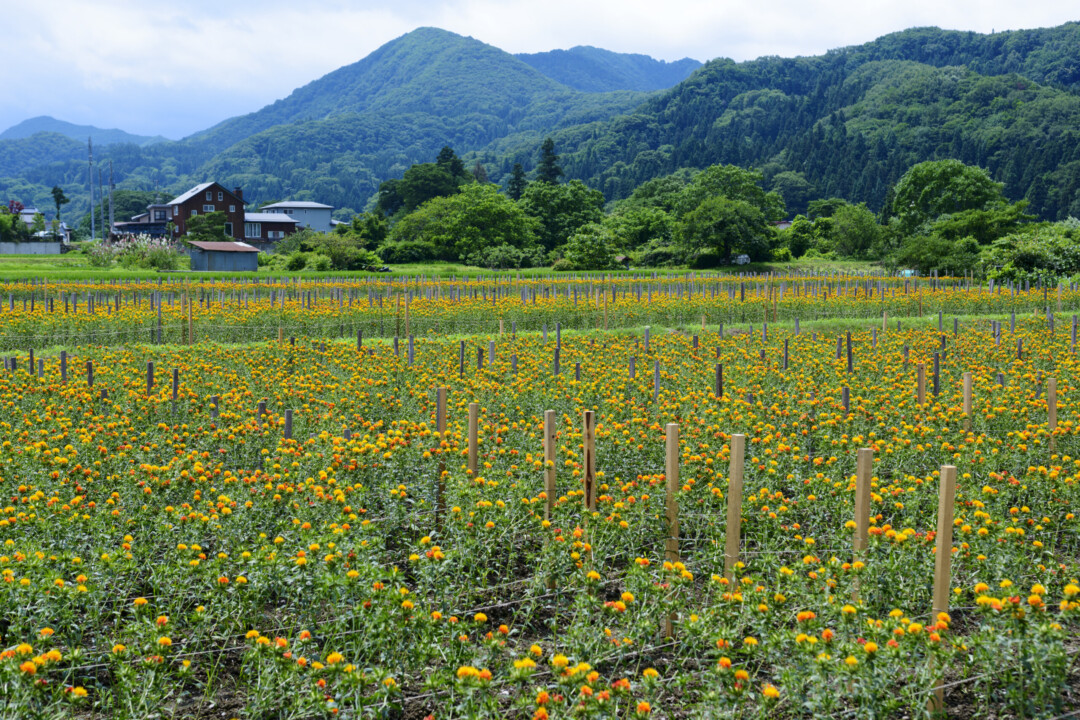Ikuseishimo has written tourism articles for the six prefectures of Tohoku plus α.
My latest craze is machine knitting, and I've started attending classes as well.
Tohoku Diary
Cities
Yamagata City/Safflowers decorate the “hanagasa” and sugegasa hats that are essential for festivals
2024/06/03

The flower hats are decorated with safflower, the symbol of Yamagata Prefecture.
The safflower that colors the flower hat is also the prefectural flower of Yamagata, and is a symbol of Yamagata that is widely loved by the people of the prefecture. The flowering season is in July, when the safflower fields turn golden yellow. The name safflower comes from the fact that it was once used as a raw material for lipstick and red dyes, but the petals themselves are yellow. It is said that the crimson color squeezed out of just 1% of the petals was said to have the same value as gold during the Edo period.

Safflower is native to the Mediterranean coast, Egypt, and the Middle East. It was introduced to Japan through the Silk Road around the 3rd century. In particular, the ''fertile, well-drained soil'' of the Mogami River basin is ideal for growing safflower, and the area soon grew into a major production area. It is said that during the Edo period, ''Yamagata safflower'' sold like hotcakes in the capital.
Currently, varieties have diversified, and in addition to ''Mogami Benibana,'' which is used as a dye, ''Thornless Safflower'' and ''Shirobana Safflower'' have also been created as cut flower materials. The main cultivation areas are Murayama and Okitama regions. Be sure to visit the safflower fields during the flowering season.
- 1
- 2
Recommended Articles
-

Winter Vistas
2025/02/04
Yamagata City/“Zao Juhyo Festival 2025” where the “snow monster” frost-covered spots are exciting
-

Winter Night Pleasures
2022/12/12
Fukushima City/Take on the ultimate outdoor experience “Winter Camp” that can only be enjoyed in winter
-

Summer Retreats
2023/07/31
Fukushima City/Go to Goshikinuma, a cool spot in Tsuchiyu Onsen, and a spectacular view of Mt.
About the Writer
writer
Minako Yoshida
![Tokimeku Tohoku[Tourism web media of six cities in Tohoku]](https://tohoku-kizunamatsuri.jp/special/en/wp-content/themes/touhokubunkatheme_en/assets/img/logo.svg)